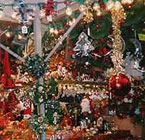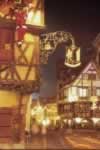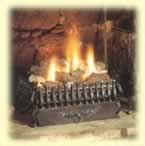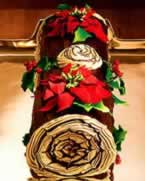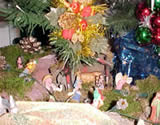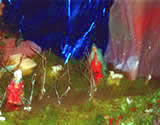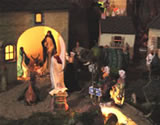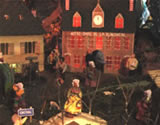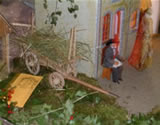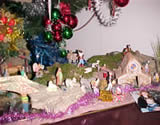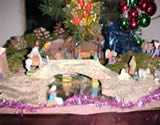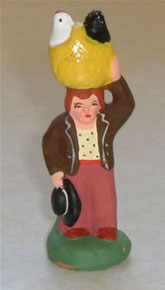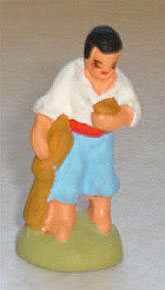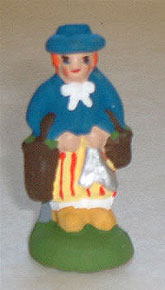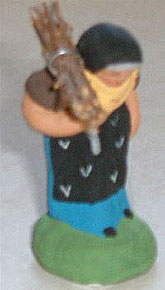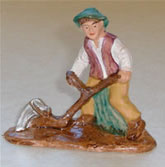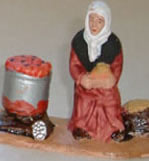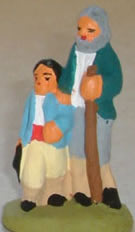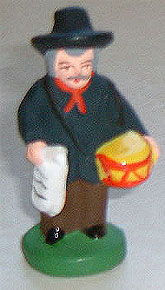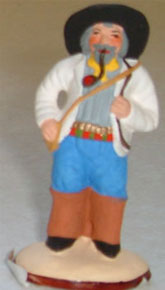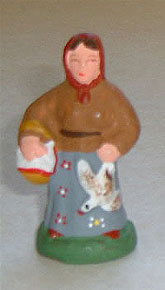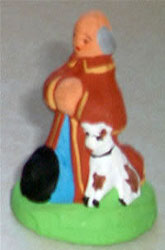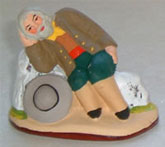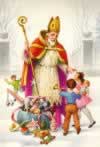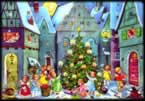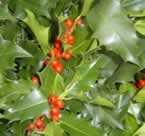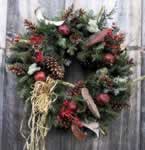
French Home Page |
| Icons of France |
| All about Paris |
| Châteaux |
| 19th Century France |
| Famous People |
| Le Père Noël |
| Christmas Word List |
|
Towns and villages are decorated at Christmas time.
Christmas markets sell all the things that make Christmas so special. Go to Christmas ambience in France to find out how people in France make this time of year so wonderful.
The Christmas market in Strasbourg in the north of France is one of the most famous in France.
The Bûche de Noël, the Christmas dessert, is based on the Yule Log of old. Go to the Bûche de Noël page to find out more.
Here is the dessert! Find a recipe to make it on the Bûche de Noël page.
|
|
The Christmas Crib |
|||||||||||||||||||||||||||||||||||||||||||||||||||||||||||||||||||
|
St Francis of Assisi is said to have been the first to make a Crib. In a cave in Greccio, Italy, during Christmas 1223 he placed a real donkey and a real ox in his créche. The tradition of having a crib at Christmas became very common in Italy and France. Many French homes at Christmas time have a crib or creche, which serves as the focus for the Christmas celebration.
In the South of France, the creches are very different from the ones we are familiar with. What makes these cribs different is that they present a good deal more than the Holy Family of Jesus, Mary and Joseph in a stable, with the shepherds, and Magi (the Three Kings). The creche is a little village, with all the important local people and village characters as well. Each area in France has its own way of making the figures in the crib. They may be made from wood, pastry or clay and they are painted. They may be tiny or as big as life size. The creche in peoples' homes often has little clay figures called santons or "little saints." These little figures are made by craftsmen in the south of France throughout the year. The craftsmanship involved in creating the gaily colored santons is quite astounding. The patterns for the moulds for clay figurines have been passed from generation to generation since the seventeenth century. The colours and materials are traditional. Throughout December the figures are sold at annual Christmas fairs in the South of France. The creche with santons often represents the village itself, with familiar buildings. In some of the creches pictured below, the school, the café, some of the houses and landmarks really existed in the original villages or towns. These are creches from private homes; they are the result of much hard work.
Here are some of the village characters you might find in a Santon collection.
There are many other characters in the village. To have a look at all the characters, and some sample villages, click here. Here are some of the Santons in the village.
|
The story of Santons - how they originated
La crèche - examples of family made crèches.
Santon characters you could find in a village collection.
OTHER LINKS

